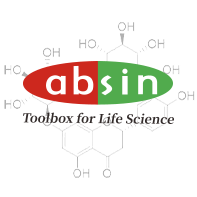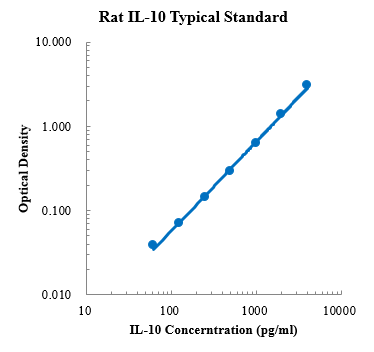Product Details
Product Details
Product Specification
| Description |
Detection Principle: This kit uses double antibody sandwich ELISA technology. Specific anti rat il-10 Capture antibody was pre coated on a high affinity microplate. Add the standard, the sample to be tested and the biotin labeled detection antibody into the wells of the enzyme plate in turn, shake well and mix well, and then place it at room temperature for 2 hours of incubation process. The IL-10 in the sample; Bound to solid-phase antibody and detection antibody. After washing sufficiently to remove free and unbound components, streptavidin HRP (sa-hrp) labeled with horseradish peroxidase was added. After washing again, TMB chromogenic substrate was added and incubated at room temperature in the dark to develop color. The depth of color response is positively correlated with the concentration of IL-10 in the sample. Add stop solution to stop the reaction, and use a microplate reader to measure the absorbance value at 450 nm detection wavelength (correction wavelength 570-630 nm). Detection Type: Double antibody sandwich method Form: pre coated 96 well plate Test Sample Type: cell supernatant, serum, plasma Loading Amount: 100 μ L Kit Components: a copy of pre coated 96 well plate, standard, IL-10 detection antibody, standard dilution, detection buffer, TMB chromogenic substrate, washing solution, termination solution, sa-hrp, plate sealing membrane and instructions Sensitivity: 0.48 pg/ml Detection Range: 62.5-4000pg/ml Recovery Range: 86-108% Storage Method: 2-8 ℃ Standard Curve:
Background: Interleukin 10 (IL-10)It is a homodimer composed of two 178 amino acid subunits. In humans, it is encoded by the IL-10 gene located on chromosome 1 and consists of five exons. IL10 is mainly secreted by monocytes, but less by lymphocytes, type II helper T cells (Th2), mast cells, cd4+cd25+foxp3+ regulatory T cells, and partially activated T cells and B cells. It has multiple effects on immune regulation and inflammation. It downregulates Th1 cytokines, MHC class II antigens and costimulatory molecules of macrophages. It can also enhance B cell survival, proliferation and antibody secretion. IL-10 can block NF-κB activity, and participate in JAK-STAT signaling pathway regulation. The immunosuppressive properties of IL-10 suggest that it may be used in clinic to inhibit rejection after organ transplantation. IL-10 also has strong anti-inflammatory properties. |



